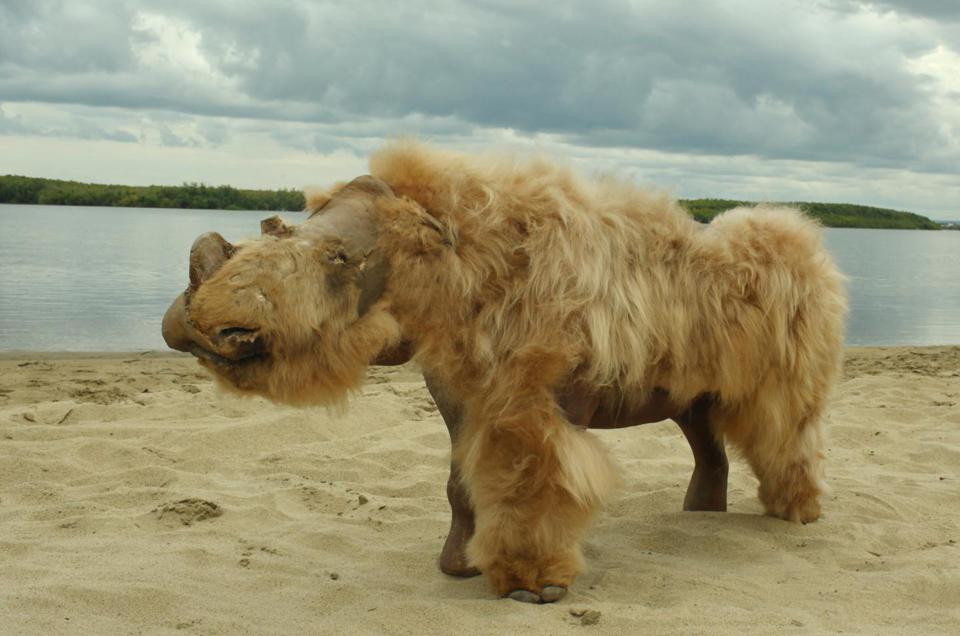
This image shows the preserved, reconstructed remains of a baby woolly rhinoceros named Sasha that was discovered in Siberia.
ALBERT PROTOPOPOV
Prehistoric humans have been considered responsible for the extinction of several iconic ice age mammals, including the woolly mammoth, saber-toothed tiger, and woolly rhino. These “megafauna” were sought after for their meat and furs. And, while hunting by humans may have caused the demise of some of these species, new evidence suggests that humans did not drive the woolly rhino extinct – climate change did.
Initially, scientists believed that woolly rhinos had disappeared approximately 15,000 years ago when humans began to settle in northeastern Siberia. However, several older encampments have since been discovered, including one that is 30,000 years old. Thus, scientists at the Centre for Palaeogenetics, a collaborative institution shared by Stockholm University and the Swedish Museum of Natural History, sought to study whether other factors may have affected the Siberian woolly rhinos’ survival.
Scientists examined ancient DNA samples from the fur, tissue, and bones of 14 individual rhinos. Their analysis revealed that the woolly rhino’s gene pool was quite diverse. If the population was dwindling, the different rhinos should have been more genetically similar due to inbreeding.
According to co-first author Dr. Nicolas Dussex, a post-doctoral researcher at the Centre, “We found that after an increase in population size at the start of a cold period some 29,000 years ago, the woolly rhino population size remained constant and that at this time, inbreeding was low.”
In addition to finding that woolly rhino populations remained stable after humans arrived, the scientists also found that the rhino’s DNA contained mutations that helped them thrive in Siberia’s cold environment. One such mutation is a skin receptor used to detect changes in temperature – an adaptation that woolly mammoths also possess.
Instead of overhunting by humans, the study’s authors suggest that a brief warming period near the end of the previous ice age (the Bølling-Allerød interstadial) that increased sea levels may have altered the woolly rhino’s habitat and food resources, causing the rhino population to crash.
“We’re coming away from the idea of humans taking over everything as soon as they come into an environment, and instead elucidating the role of climate in megafaunal extinctions,” says PhD student and co-first author Edana Lord, “Although we can’t rule out human involvement, we suggest that the woolly rhinoceros’ extinction was more likely related to climate.”
Article Credit: forbes

Hi there, just spent a short break reading this site. I got some good ideas for topics after going through at some of your posts. a lot to read, thats for sure.